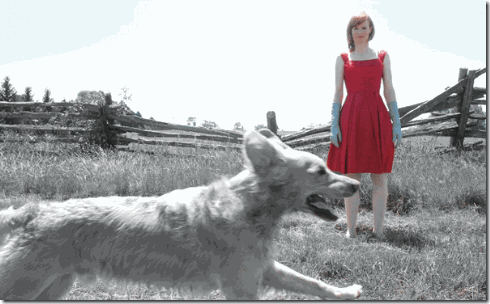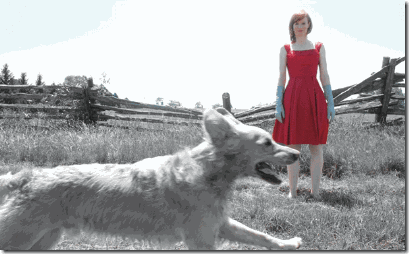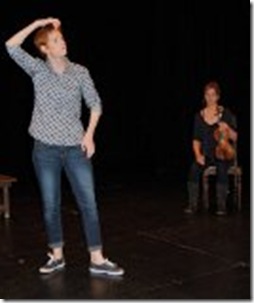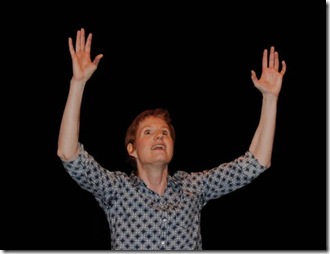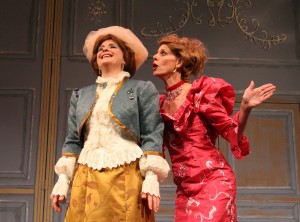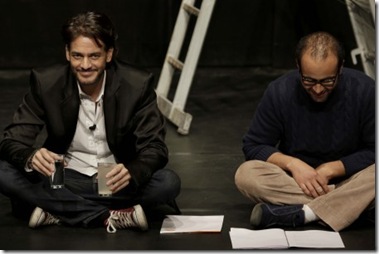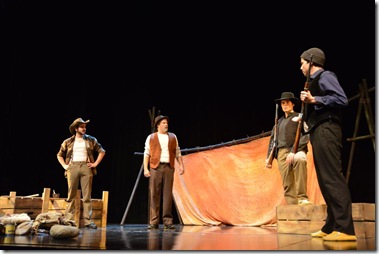Miss Caledonia: A one-woman show about her mother’s teenage dreams during the 1950’s
A Lunkamud (Toronto) production
Photo. National Arts Centre
OTTAWA — If you passed 15-year-old Peggy Ann Douglas on the street, you likely wouldn’t even notice her. Wearing jeans and a nondescript shirt, she’d look like any other teenager: slump-shouldered, a bit confused, wholly focused on her own struggle to figure out who she is and where she fits in the world.
But let Melody A. Johnson inhabit that young woman, and you can’t take your eyes off Peggy Ann as she travels her funny, bumpy and occasionally poignant journey from hemmed-in farm girl to singing, baton-twirling beauty contest contender who’s convinced that becoming Miss Caledonia will springboard her to her true destination: Hollywood stardom. After all, she reasons, if it happened to Singin’ in the Rain star Debbie Reynolds, why not to Peggy Ann Douglas?
